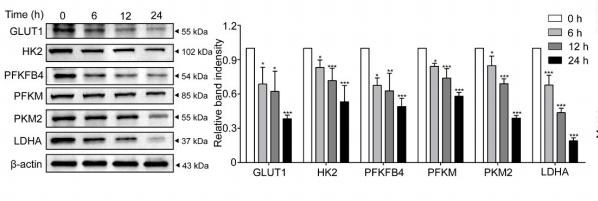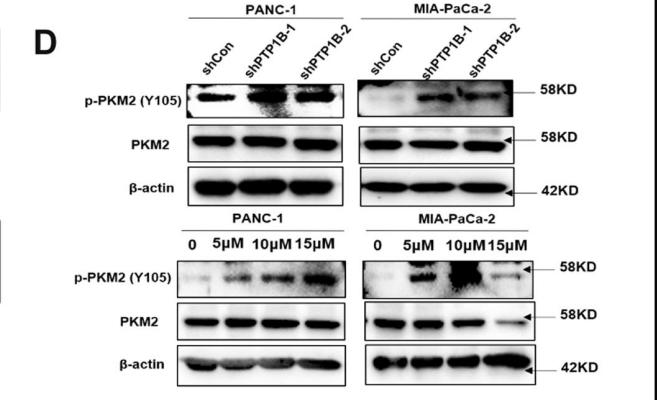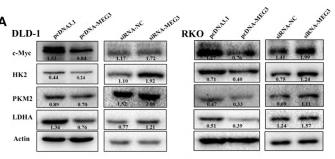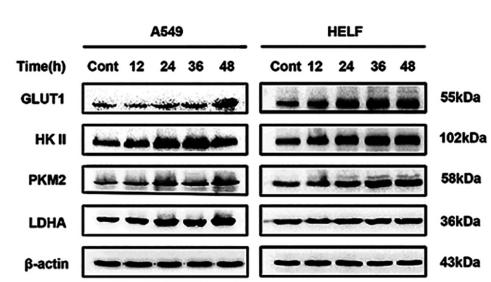产品描述
*The optimal dilutions should be determined by the end user. For optimal experimental results, antibody reuse is not recommended.
*Tips:
WB: 适用于变性蛋白样本的免疫印迹检测. IHC: 适用于组织样本的石蜡(IHC-p)或冰冻(IHC-f)切片样本的免疫组化/荧光检测. IF/ICC: 适用于细胞样本的荧光检测. ELISA(peptide): 适用于抗原肽的ELISA检测.
引用格式: Affinity Biosciences Cat# AF5234, RRID:AB_2837720.
展开/折叠
CTHBP; Cytosolic thyroid hormone binding protein; Cytosolic thyroid hormone-binding protein; KPYM_HUMAN; MGC3932; OIP 3; OIP-3; OIP3; OPA interacting protein 3; Opa-interacting protein 3; p58; PK muscle type; PK, muscle type; PK2; PK3; PKM; PKM2; pykm; Pyruvate kinase 2/3; Pyruvate kinase 3; Pyruvate kinase isozymes M1/M2; Pyruvate kinase muscle; Pyruvate kinase muscle isozyme; pyruvate kinase PKM; Pyruvate kinase, muscle 2; TCB; THBP1; Thyroid hormone binding protein 1; Thyroid hormone binding protein cytosolic; Thyroid hormone-binding protein 1; Tumor M2 PK; Tumor M2-PK;
抗原和靶标
A synthesized peptide derived from human PKM2, corresponding to a region within the internal amino acids.
研究领域
· Human Diseases > Endocrine and metabolic diseases > Type II diabetes mellitus.
· Human Diseases > Infectious diseases: Viral > Human papillomavirus infection.
· Human Diseases > Cancers: Overview > Viral carcinogenesis.
· Human Diseases > Cancers: Overview > Central carbon metabolism in cancer. (View pathway)
· Metabolism > Carbohydrate metabolism > Glycolysis / Gluconeogenesis.
· Metabolism > Nucleotide metabolism > Purine metabolism.
· Metabolism > Carbohydrate metabolism > Pyruvate metabolism.
· Metabolism > Global and overview maps > Metabolic pathways.
· Metabolism > Global and overview maps > Carbon metabolism.
· Metabolism > Global and overview maps > Biosynthesis of amino acids.
· Organismal Systems > Endocrine system > Glucagon signaling pathway.
文献引用
Application: WB Species: human Sample: MIA PaCa-2 cells
Application: WB Species: Human Sample: pancreatic cancer tissue
Application: WB Species: Human Sample: MCF-7 cells
Application: WB Species: human Sample: LC cells
限制条款
产品的规格、报价、验证数据请以官网为准,官网链接:www.affbiotech.com | www.affbiotech.cn(简体中文)| www.affbiotech.jp(日本語)产品的数据信息为Affinity所有,未经授权不得收集Affinity官网数据或资料用于商业用途,对抄袭产品数据的行为我们将保留诉诸法律的权利。
产品相关数据会因产品批次、产品检测情况随时调整,如您已订购该产品,请以订购时随货说明书为准,否则请以官网内容为准,官网内容有改动时恕不另行通知。
Affinity保证所销售产品均经过严格质量检测。如您购买的商品在规定时间内出现问题需要售后时,请您在Affinity官方渠道提交售后申请。产品仅供科学研究使用。不用于诊断和治疗。
产品未经授权不得转售。
Affinity Biosciences将不会对在使用我们的产品时可能发生的专利侵权或其他侵权行为负责。Affinity Biosciences, Affinity Biosciences标志和所有其他商标所有权归Affinity Biosciences LTD.













![Figure 5 BHD inhibited protein and mRNA expression of pyruvate kinase M2 (PKM2) and hypoxia-inducible factor-1 alpha (HIF-1α) as well as its target genes (GLUT1, PDK1, lactate dehydrogenase A [LDHA]) in aortas after high fat diet treatment. (a) Protein Levels of PKM2 were measured by Western blot analysis, and quantitative analysis was performed on the corresponding bands (n = 8–9). (b) Protein Levels of HIF-1α was measured by WB, and quantitative analysis was performed on the corresponding bands (n = 9). (c) The mRNA levels of GLUTA, (d) PDK1, and (e) LDHA in aortas (n = 6) were measured by qRT-PCR. Means ± standard error of mean. *P < 0.05, **P < 0.01, ***P < 0.001 versus Con; #P < 0.05, ##P < 0.01 versus Mod. PKM2 Antibody - Figure 5 BHD inhibited protein and mRNA expression of pyruvate kinase M2 (PKM2) and hypoxia-inducible factor-1 alpha (HIF-1α) as well as its target genes (GLUT1, PDK1, lactate dehydrogenase A [LDHA]) in aortas after high fat diet treatment.](http://img.affbiotech.cn/uploads/202409/5ce509e907ddfd09b9be49206226cfbb.png)


